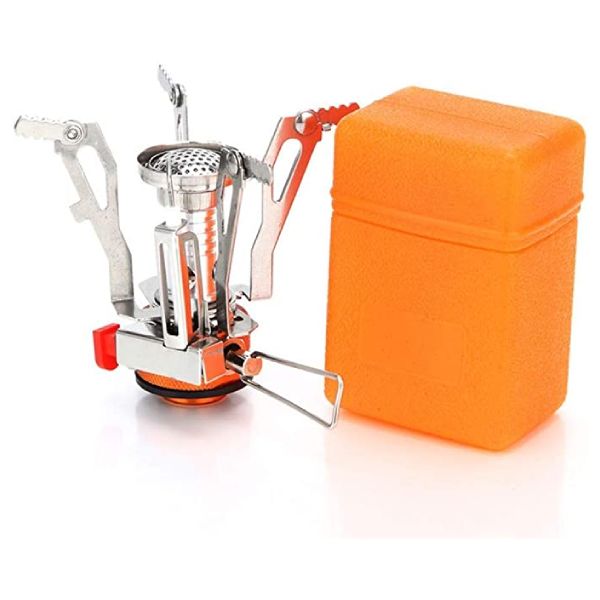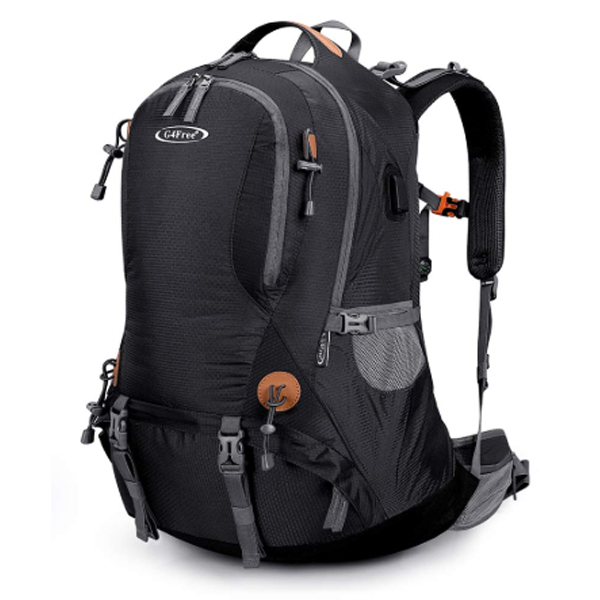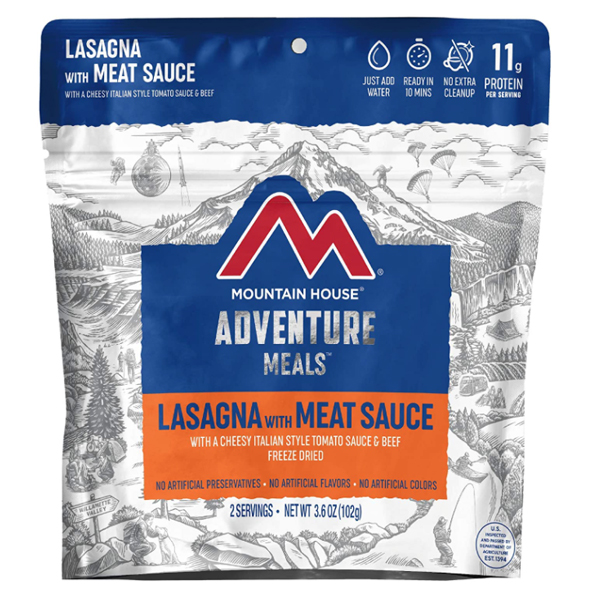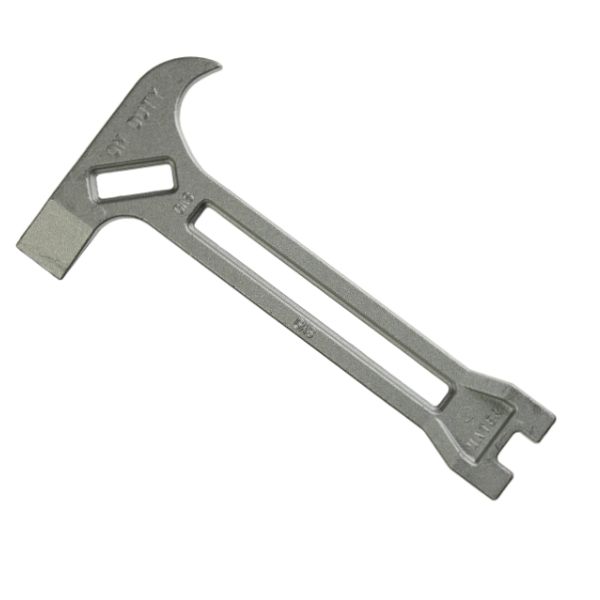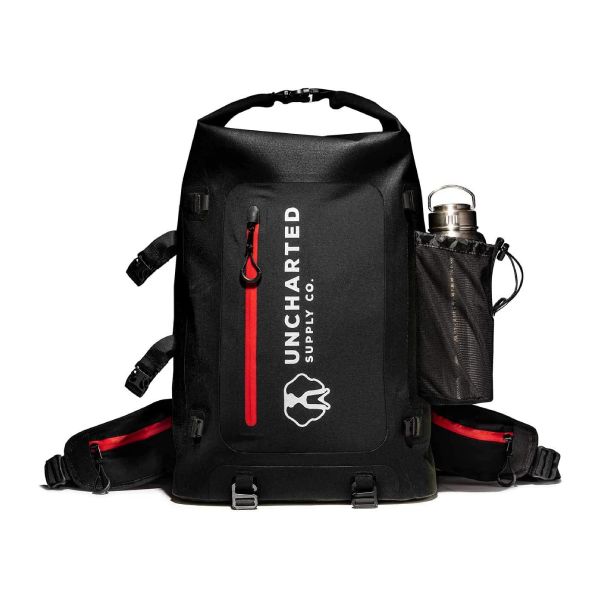Complete Guide to Emergency Shelters and Warmth
Get Out of the Elements
Extreme heat or cold can be deadly. Even moderate weather situations like rain, snow, wind, etc. can cause illness, dehydration, disorientation, and more.
In an emergency situation, getting out of harsh elements and adjusting your climate as much as possible can be life saving. The seasons, geographical regions and weather patterns create a lot of variables for this topic. In this article we'll go over general best practices and and how to deal with the most common situations. You'll need to look at your situation and adjust your gear and skills to accommodate.
Experience: Snow Caving Gone Wrong
A few years ago we took a Boy Scout troop on a snow caving outing. We trained for weeks before. We had an experienced caver share the best techniques, gear, clothing, etc. It was so cool. The boys felt very prepared.
We asked around and a former Scout Master had the perfect location for deep snow and access. We set off all outfitted and ready. The boys pulled snow sleds with their gear. We had checked them before we left and they all looked ready.
We arrived at the destination and they jumped right in, literally. Within an hour or two they had carved out fantastic caves. Each one was unique and showed some personality. As they were trained, they changed out of their wet, sweaty clothes into a second set. They started to cook dinner and the evening continued like many before.
We all decided to turn in and got all cozy in our new homes. I was just about to doze off when, "Hey, can you guys hear me?" Turns out you can't hear anything outside when inside a cave, even a yelling person. However, the voice came from the doorway and instantly I was wide awake.
"I can't do this." I shined my light on the face and it was one of the leaders. Turns out he hadn't been able to attend our trainings and had never gone caving before. He was wet and his cave was more like a tunnel. He had climbed into a wet sleeping bag and wiggled into the tunnel. He was cold, couldn't breathe well and was a bit clausterphobic. Yikes!!!
We decided a few of us would hike out to get him to safety. We made sure he was warm enough and began our hike around midnight. As we climbed out of the valley we started to heat up. We didn't want to sweat so we shed some layers. The steam lifted off our base layers.
On our way out, a snow groomer (we were close to a ski resort) saw us on the road. I can only imagine their thoughts when they saw the three of us hiking in the middle of the night without coats and dragging sleds full of gear. They stopped and asked if we were OK. We knew we were only a half mile from the parking lot and we were good. They let us go.
Next morning we learned they hadn't been comfortable with our situation and called in to have someone check on us. We were faster than expected and got to the truck and took off. When the party they called couldn't find us they called search and rescue. They drove around for some time until they found our other Scouters and asked. They told them where our truck was parked and if it was gone we were fine.
The cold is no joke. The leader who realized he was unprepared knew it. We knew it also and decided to hike him out. The resort people and search and rescue knew it too. You don't mess around with extreme elements.
Evacuation to the Outdoors
It's one thing to be in the outdoors with your gear. It's another to have to evacuate the comforts of your home to survive in the outdoors. Finding shelter and staying warm are critical activities.
Keeping a level head and prioritizing your survival activities gives you the best chance to survive. Keep in mind, most places in the US get cool or cold at night so no matter where you are, you need to consider your shelter needs early on.
About This Article
Content:
Scope:
Difficulty:
Table of Contents
Priority and Need for Climate Control
Exposure to the elements can be devastating. Even slight temperature differences can cause hypothermia or dehydration very quickly, especially with wind or if you get wet. The need for shelter and warmth rank higher on the survival priority list than water and food. If you become hypothermic you may not survive a night, let alone the 3 days you can live without water. Find a way to protect yourself from cold, heat, wind, and wet weather.
Escaping Heat
Dehydration happens when you don't drink enough water. Extreme heat can accelerate water expenditure from breathing and sweating.
Heat stroke can occur when the body temperature gets too high. You can suffer from heat stroke even when you're not dehydrated.
Experience: Jogging on a Vegas Summer Day
We lived in Las Vegas for a few years. I'd often jog on a route near our home. In the summer months I still went on my outings. I'd hydrate well before and just as I left the house I'd pour water over my head. By the time I was half way around my route I'd be dry and even though I'd sweat it'd evaporate immediately.
One day I got a late start and didn't pay attention. A mile into the route I could feel my body shutting down. My mind couldn't think straight, my limbs didn't want to move normally, and I felt like I might pass out. I knew it was heat stroke.
I found a tree for shade and laid down immediately. I could feel my system coming back online but I didn't rush it. I decided to walk home.
Turns out once the body gets to a certain temperature it can't produce sweat, which wouldn't help anyway. It gets really spooky at that temperature.
Sunburn is also a risk. The pain and discomfort from sun exposure can be debilitating when surviving.
Getting out of extreme sun and heat is as important as avoiding the cold.
Escaping Cold
Hypothermia occurs when your body core temperature drops below the healthy range. You begin to shiver and your body starts to do what it can to preserve the vital organs. Blood vessels constrict at the extremities and blood is drawn back to the core. Eventually, cold will begin to shut down the vital organs.
Experience: Hypothermia Causes Bad Decisions
A few years ago we read a news article about a couple who had been stranded in their car during a snow storm. They had made a wrong turn on to an unused road so no one was coming soon.
Days passed and the man decided to go looking for help. He left his wife and child in the car and bundled up for the hike out.
A day later the car was found and the mom and baby were fine. The rescuers tracked the man because he hadn't turned up. As they followed his tracks they found his coat, then his jacket. Later they found his body at the bottom of a valley in the water.
They suspect that he became hypothermic which can cause significant confusion. He had mistakenly thought he was overheating and started to shed layers. He became disoriented and hiked down into the valley instead of the right direction. They believe hypothermia clouded his judgement with dire consequences.
The key is to monitor your body temperature and make sure you have a good shelter early on in a survival situation.
Survival Priority List
Priortize your gear and supplies based on this list.
- Air
- First Aid/Mental Health
- Communication
- Tools
- Shelter
- Warmth
- Water
- Food
- Hygiene
- Self Protection
- Extra Clothing
- Container
Survival Priorities Explained
Warmth Products
Military Wool Blanket - L
L, 66 x 90 in
Full, 1-person
Generic military wool blanket for emergencies and the outdoors
Buy on AmazonBest Shelter Products
Emergency Tents for Survival
A tent is the best shelter product you can purchase for your survival gear. Modern tents are easy to set up, durable, and very protective against the elements. Mountaineers take high end tents on their excursions to get out of the wind, rain, snow, and sun.
For prepping purposes we recommend a waterproof tent with a rain fly and vestibule for storing extra packs and gear. Be sure the tent bottom is sturdy so you can rely on it for some time.
Emergency Tarps for Survival
A camping tarp (not your typical all purpose tarp) is typically lighter than a tent (no poles) and can be used for many situations. It can be set up like a tent, hung like a canopy, used as a ground cloth water barrier, hung for water collection, etc.
They are typically suspended with paracord and anchored with stakes or carved wood pegs. They're very versatile.
Emergency Shelters
Mylar emergency shelters are the lightest option for survival kits. They can really help in a pinch but aren't the best for long term use. They do keep the wind and elements out and have some radient properties for staying warm.
Products for Your Kits
For our emergency kits we recommend different products depending on the stage (discussed below). An essential kit only has room for a mylar option. A bug out bag can contain a tent or tarp. A house kit should definitely have a tent, if not multiple.
Survival Shelter Products
Emergency Survival Shelter/Tent
Radiant survival tube tent and bivvy with whistle and 550 paracord.
Buy on AmazonMaking Shelter
There's no single secret to building a shelter if you don't have one in your gear. You have to use what you can find and get creative.
Experience: Build Your Own Shelter and Stay the Night
For Scouts my son chose to do the Survival Merit Badge (his father may have pursuaded him). One of the requirements was to build your own shelter and spend a night in it. On one of our regular campouts (happened to be late in the fall) he decided to tackle the challenge. I was surprised at the outcome.
We went to a place he'd been to before. All of the boys and leaders set up their tent and he went to work using the resources of the land. He found a depression in the ground and laid some pine boughs he cut from a tree. He found a bunch of dried grass and laid it out over the bows. He then laid dried leaves over the grass. Next he built a roof out of branches and sticks. He used more bows to layer over the top of his structure. He weaved the bows into the sticks to make it sturdy in case of wind.
I'll be honest, it was cold and I was a little nervous for him. It wouldn't have surprised me if he had invaded my tent in the middle of the night to find more warmth.
When it was time for bed he laid his sleeping bag in his new hollow and crawled in with his winter coat and layers. I asked if he was OK and he responded that he was.
The next morning I woke up and unzipped my door to look his way. He was still burrowed in. I went over to him and he was awake. I asked how he did and he responded that he didn't want to get out because it was so warm inside. He had slept comfortably and stayed warm all night.
If you keep your head about you and practice ahead of time you can do really well in an emergency.
Principles to Making a Shelter
When building a shelter keep these things in mind:
- Get off the ground. The dirt will draw heat away from you. You want to use natural materials to create insulation. Pine bows, grasses, leaves, etc all have pockets of air that will insulate you from the ground.
- Build a windproof, waterproof, weatherproof roof overhead. Use branches, a cave, a rock formation, snow, etc. to enclose yourself from the elements. Leaves, grasses, and needles can keep water off.
- Insulate as much as possible. You want to trap heat as much as possible.
- The size of the shelter can make a difference as well. The more space you have to heat with your body the harder it is to benefit from any insulation you manage to establish.
- Make the shelter sturdy. Use paracord or rope or weave your branches to make the structure rigid.
Outdoor Shelters
Here are some of your options for outdoor shelters:
- Natural features (caves, rock formations, etc.) - use natural features with natural protective properties
- Lean-to - build a simple lean-to with branches and pine bows
- Teepee - build a pine bow teepee and cover it with leaves or grass
- Snow caves - make a snow cave with a relatively small door - stay dry!
- Cabin - it's possible to build a cabin out of branches
- Mud Hut - use rocks, clay and mud to create a domed structure
You can also combine some of these methods. For example you can build the walls of a mud hut and add a lean-to roof covered with branches or grass.
Shelter Building Products
Ka-Bar Fixed Blade Knife
Sturdy, mid-priced, full-tang field knife for multi-purpose survival
Buy on AmazonModerating Your Temperature
Building a shelter to get out of the elements is critical. Controlling the temperature inside that shelter is critical as well. You may need to build a fire to stay warm or vent the shelter to create a draft and cool off.
Fire
You can build a fire near or in your shelter depending on how you built the shelter - be careful not to burn down your shelter! If you have a teepee or build a shelter with a chimney you can have the fire inside.
Experience: A Night in a Teepee
As a kid we'd camp all the time. On occasion we'd sleep in a teepee owned by the Scout troop in our area. I was blown away by how warm they are in the middle of the winter when you have a fire burning inside.
We'd go to different areas with snow and set up the teepee. It takes awhile but goes pretty quickly with multiple people. After the teepee is set up, we'd build a fire, even before adding our gear. Once the fire was going we'd set up our gear.
By morning I was always surprised by how well I'd slept. They're warm and very weatherproof.
Drafting
In hot climates you may need to add openings to your shelter that don't allow sun or rain but allow a breeze to pass through to keep you cool.
We've added 4 (one in each direction) so we can open the ones we need depending on the direction of the wind.
Related Articles
Portable Wood Stoves
Foldable Portable Wood Burning Cooking Stove
Small wood-burning stove for cooking or warmth
Buy on AmazonPortable Wood Burning Cooking Stove
Small round wood-burning stove for cooking or warmth
Buy on AmazonBest Fire Starting Products
Getting a fire started when it's cold can be a challenge. Having the right fire starting gear makes a huge difference.
Lighters
Lighters are the best tools for survival fire starting. We recommend carrying a lighter in all of the emergency kit checklists we offer.
A BIC lighter is a reliable go-to you can count on to spark and light. Arc plasma lighters also work well. If you get one, make sure to get one with the arc protruding from the housing so you can touch tinder.
Matches
Waterproof matches are designed for emergencies. They light in most conditions and as long as your tinder is dry you should be able to get a fire going with one or two matches.
Ferro Bars
Ferro bars are made of a special metal that sparks when scraped with a striker or knife. The sparks are so hot they'll easily light dry tinder.
Ferro bars can be tricky - especially when they are little or the striker is small. A lot of the bars you buy at big box stores are hard to use. Buy a larger bar and they'll shower your tinder with extremely hot sparks.
Tinder
There are a number of options that make good tinder for fire starting. Here are some of the options:
- Dry grass - Grass has to be dry to ignite.
- Dry shavings - Use a knife to shave dry wood from a branch. The smaller they are the easier they will ignite. Make sure to have a bunch of them to keep feeding as the fire gets going.
- Duct tape - Surprisingly duct tape lights up easily and burns for quite awhile.
- Aerosols - Bottles (like bug spray) contain flamable aerosols that can be sprayed over a flame to light tinder - be careful with this one.
- Survivor Cord - We recommend carrying several (15) feet of survivor cord in your essentials kit and bug out bag. One of the strands is wax covered, waterproof juke that lights easily and burns for awhile. We've tested it and it's great for firestarting.
Fire Starting Products
550 Paracord with Integrated Fishing Line, Wire, Tinder
Enhanced milspec type 3 550 SurvivorCord for survival
Buy on AmazonSurvival System for Any Scenario
As a former Boy Scout Master we spent many nights in the outdoors. At one point we accrued 21 campout nights over an 18 month period to help a couple of Scouts reach their Eagle Scout rank. We had a lot of fun but it was a lot of time in the wilderness.
We learned a lot. The boys struggled to stay warm at the beginning. However, as time passed, they acquired and brought the gear. They learned to set their tents up in protected areas, which sleeping bags performed the best, how to use layered clothing, and how to start a fire in tough conditions.
It was fun to see the boys begin to survive on their own and have fun while they did.
Survival System
For emergency preparedness we recommend setting up a survival system. Part of the system includes essential gear and supplies.
Stage 1: Essentials
We recommend everyone carries the basic essentials on daily activities. Homes and vehicles should all have survival gear. At least, you should be able to start a fire and keep warm with a mylar survival blanket.
Stage 2: Go-Bags
In case of evacuation, Go-Bags should contain mid-level supplies. An evacuation may mean you don't have direct access to a house or structure. You may be camping out.
You should carry additional items when we venture away from civilization. You should be able to set up a tent or use a tarp for a quick shelter.
Stage 3: House Kit (for Home and Family)
Families and households should have tents, heaters, stoves, fuel, tinder, etc. Your House Kit should be ready for evacuation and should be able to sustain your household indefinitely.
Stage 4: Bulk Supplies and Equipment
We recommend having food storage, extra toiletries, and equipment (i.e. generator) for shelter-at-home situations. Having winter supplies, wool blankets, and firewood (if applicable) can help you survive for a long time.
The Goal of the Staged Approach
The goal in emergency preparedness is to always have the right gear and supplies on hand depending on your situation. When you're away from home you often don't have ready access to common items you might have at home. You also may not have the ability to carry a lot of weight and bulk.
A staged approach lets you carry the maximum possible without overdoing it for the situation.
Home Away From Home
The biggest thing you can do to prepare for outdoor survival or an emergency is to be prepared with the right gear. Even a shelter-in-place situation where the utilities are out can be minimized if you have the right gear and supplies.
Whether you have what is needed to build a shelter, wrap in a warm wool blanket, or start a fire, you'll want to have the necessary items on hand. We recommend practicing with the products so you know how to use them when the time comes.
Shop our Shelter and Warmth catalog to find the top ranked survival gear for emergencies.
1This post may contain affiliate links. If you make a purchase, I may earn a small commission at no additional cost to you.
2 As an Amazon Associate we earn from qualifying purchases.
3 Most reviews are based on personal experience from one of our content editors. Some are based on research and the opinions of other reviewers.









